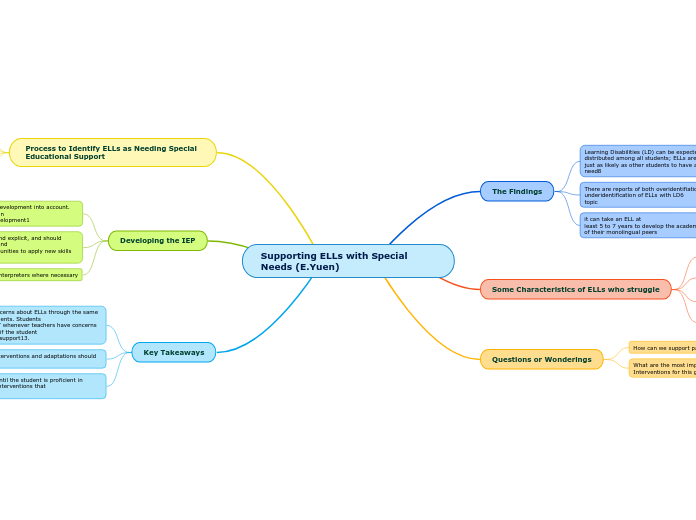Supporting ELLs with Special Needs (E.Yuen)
The Findings
Learning Disabilities (LD) can be expected to be evenly distributed among all students; ELLs are
just as likely as other students to have a special learning need8
There are reports of both overidentifiation and underidentification of ELLs with LD6
topic
it can take an ELL at
least 5 to 7 years to develop the academic and language skills of their monolingual peers
Some Characteristics of ELLs who struggle
Not making progress, or progress is uneven
Has not made the same progress as other students with
similar backgrounds (linguistic and academic)
Writing is very challenging and is not reflective of oral
language skills
Difficulties in all languages spoken
Questions or Wonderings
How can we support parents of ELLS with Special Needs?
What are the most impactful literacy strategies and Reading Interventions for this group?
Process to Identify ELLs as Needing Special Educational Support
Build a student profile
Share Assessment Information
SubtoPresent the Student at an In-school School Team Meetingpic
Provide the Student with Literacy Interventions
Developing the IEP
Instruction should take language development into account. For ELLs, there should be a focus on
different aspects of vocabulary development1
Instruction should be systematic and explicit, and should incorporate on-going assessment and
progress monitoring18, and opportunities to apply new skills in authentic contexts
Involve parents, utilizing interpreters where necessary
Key Takeaways
Teachers should share concerns about ELLs through the same processes used for all students. Students
should be discussed at IST whenever teachers have concerns about their progress even if the student
needs continued ESL/ELD support13.
These classroom-based interventions and adaptations should be age-appropriate
There is no need to wait until the student is proficient in English in order to begin interventions that
target areas of deficit5
